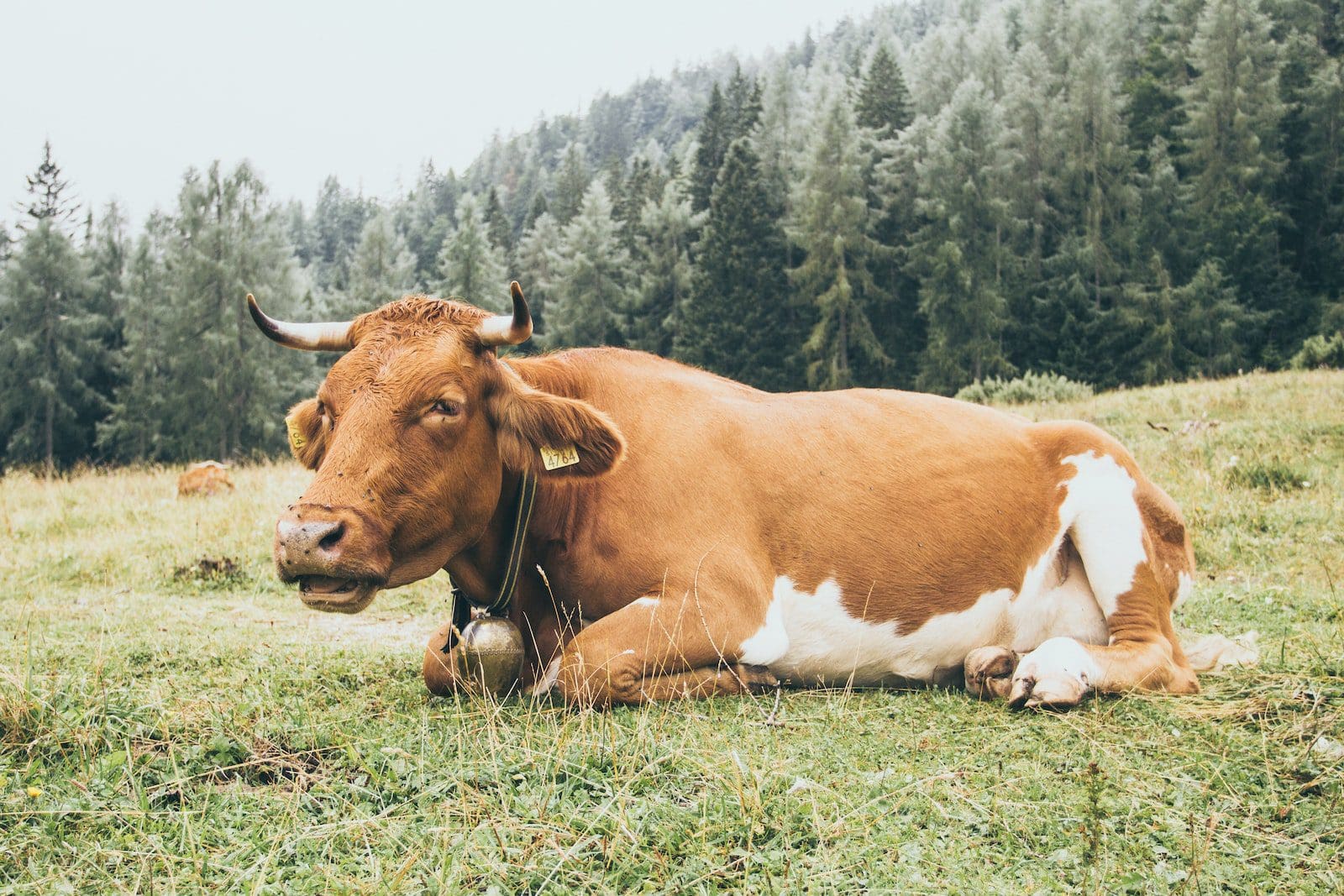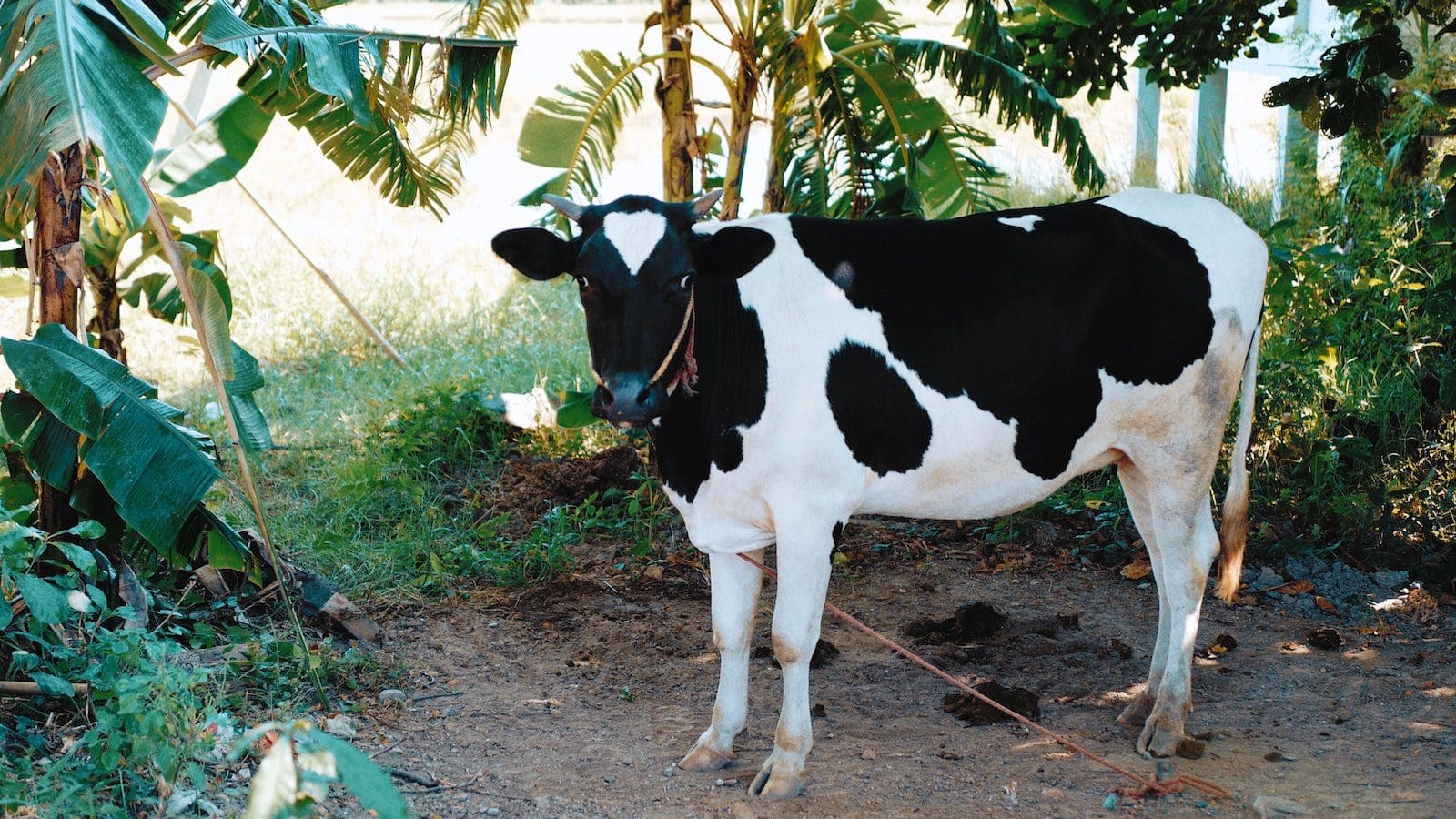Jersey cow and Holstein cow are the two most loved varieties in dairy cultivation. Both are able to change over high amounts of grain into milk.
Key Takeaways
- Jersey cows produce less milk than Holstein cows, but their milk has a higher butterfat content.
- Holstein cows are larger and have distinctive black and white markings, while Jersey cows are smaller and have a light brown or fawn coat.
- Jersey cows adapt better to heat and varied climatic conditions, while Holstein cows perform best in moderate climates.
Jersey Cow vs Holstein Cow
Jersey cows are a breed of dairy cows that originated on the island of Jersey in the English Channel. They are known for their small size and distinctive light brown color, although they can range from tan to dark brown. Holstein cows are a breed of dairy cows that originated in the Netherlands. They are known for their distinctive black-and-white markings, although they can also be red and white or black.

The Jersey cow has found its name from the spot of its initial point of origin. It is named after Jersey Island in the British, where it got originated.
Holstein cow has their origin in the Dutch, provinces of North Holland and Friesland in Northern Germany. Its originating place is known as the highest place generating dairy animals.
Comparison Table
| Parameters of comparison | Jersey Cow | Holstein Cow |
|---|---|---|
| Origin | Jersey cows are originated from the spot Jersey Island in the British Channel. | Holstein cows are originated in the Netherlands. |
| Weight | Jersey cow’s weight is around 350 550 Kg. | Holstein cow’s weight is around 580 Kg. |
| Milk | Jersey produces 13,000 kg of milk in the course of its life. | Holstein cows produce 19,000 Kg of milk in the course of its life. |
| Adaptation | Jersey Cows are more adaptable to hot environments. | Holstein Cows are difficult to adapt to in hot weather. |
| Reproduction | The milk yield in the initial seventy days of lactation for Jersey Cow is 2706 Kg. | The milk yield in the initial seventy days of lactation for the Holstein Cow is 4061 Kg. |
What is Jersey Cow?
The variety of Jersey Cow is notable for its high milk creation, just as the high butterfat content of its milk. The jersey breed is the second biggest type of dairy steer on the planet.
The variety’s notoriety has been supported by variables, for example, its lower cost of creation and, because of lower body weight and, in this way, lower support prerequisites, the capacity to ship a more prominent number of fruitful draining cows per unit region is conceivable, as is unrivalled eating capacity.
Calving ease and a low pace of dystocia have put them on the map for crossbreeding with other dairy and meat breeds to limit calving-related wounds.
Jersey cows have a dark tail and an enormous udder, which is commonplace for a dairy breed. Horns are utilized on the two bulls and cows.

What is Holstein Cow?
Holstein-Friesian, a type of huge dairy cow beginning in northern Holland and Friesland. Its main attributes are its huge size and high contrast spotted markings, strongly characterized as opposed to mixed.
The milk, notwithstanding, has a moderately low butterfat content. The breed is broadly disseminated; however, it normally is amassed in regions having great liquid milk markets.
Experience has instructed that they show unique transformation capacities, which ought to subsequently get consideration according to a specialized perspective when rearing.
Holsteins produce overwhelming calves recognized by quick development, early development and simple consideration. In case they are overseen well, they display no fruitfulness issues.

Main Differences Between Jersey Cow and Holstein Cow
- Jersey cows are more versatile to blistering environments contrasted with Holstein cows.
- The milk yield in the initial seventy days of lactation for Jerseys is 2706 Kg, while for the Holsteins, 4061 Kg.




